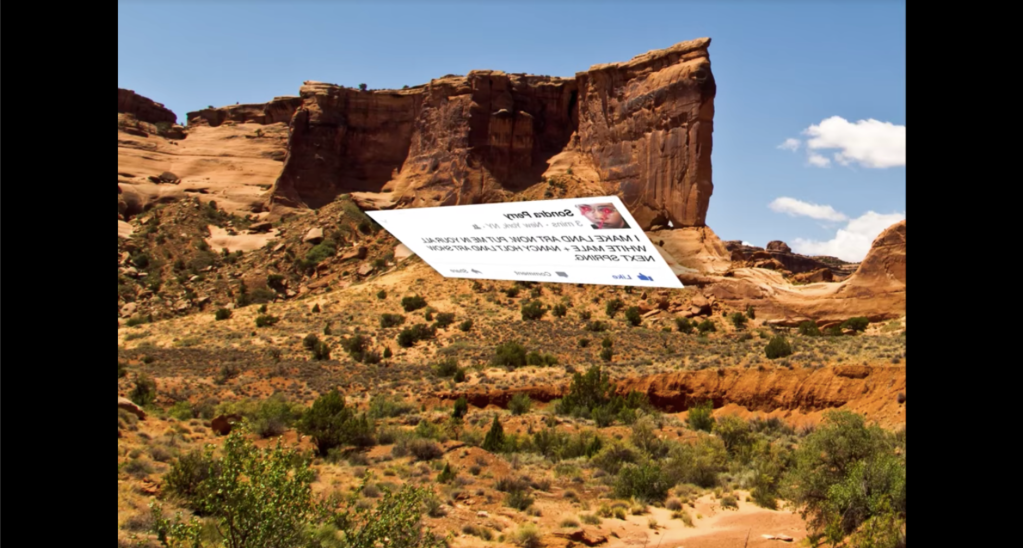
Crisis Text Line delivers a helping hand, one text at a time
Photo by Dave Johnson on Flickr.
Last night, pajamas-clad 22-year-old Tessa Shapiro spent four hours curled up on her couch, computer on her lap, a pot of tea and snacks at arm’s reach, texting with strangers.
She’s part of the volunteer army at Crisis Text Line, a former Knight News Challenge winner that Knight Foundation continues supporting in a big way.
And Shapiro may have just saved a life.
“There’s a lot of activity at night,” she says, “and I like to have the challenge of talking to as many people as I can.”
Shapiro is one of 1,500 trained volunteer counselors manning Crisis Text Line, a national service spun from DoSomething.org in August 2013 and funded, in part, by Knight Foundation.
The recent University of Michigan graduate – Shapiro earned her bachelor’s degree majoring in biopsychology, cognition, and neuroscience – plans on a career in mental health counseling and has been volunteering four hours a week with Crisis Text Line for the past year. She has helped more than 160 people to date. (Volunteers receive 34 hours of training before being allowed to handle incoming texts.)
Knight Foundation has contributed multiple grants to DoSomething.org and was an original funder of Crisis Text Line.
“In 2013, we ran a Knight News Challenge focused on the question of health data and Crisis Text Line was one of the winners of that,” says John Bracken, vice president for innovation at Knight Foundation. “One of the hallmarks of Knight’s work over the last five to 10 years has been to experiment with, and uncover new approaches for, using technology to increase civic participation and civic engagement. When we find projects that hit a vein, and that are growing, and have the capability to be sustained, adding value to society, we will double down or triple down on that, which is what we’ve done with Crisis Text Line.”
For Knight, Crisis Text Line has been among the strongest of a set of new digital, startup nonprofits that it has supported. Bracken says Crisis Text Line’s winning strategy combines strong leadership, an ability to tell its story, its approach reaching millions of users rapidly, plus the way it is structured so that the majority of paid staff focuses on building the technology and analyzing the data that pours through it.
“One of the places where Crisis Text Line really stood out is its ability to move from startup phase into a sustained adolescence,” Bracken says. “That speaks to their ability, through both philanthropy and working with corporations, to develop both philanthropic support and business models that will allow them to be around for the long term.”
Nancy Lublin, the founder and CEO of Crisis Text Line, says it was a natural spin-off of DoSomething.org, a global youth organization with 5.3 million members in 130 countries that function as an instant, online volunteer army devoted to tackling all kinds of social issues from discrimination and poverty to the environment.
“People were texting us about all kinds of terrible things that were happening,” Lublin recalls. “We were triaging it with, ‘Use a hotline,’ or ‘You really need to talk to your mom about that.’”
One day, there was a text from a young woman who was repeatedly being raped by her father that was just too horrific to simply triage.
“We really need to do something,” Lublin says she thought. “Some of the best startups are grown out of what are called ‘edge cases.’ People were already using DoSomething.org this way. So not surprisingly, when we launched Crisis Text Line, it really took off, and our growth has been pretty stellar.”
Crisis Text Line has zero marketing budget and has marketed itself to texters. The texters spread the word among themselves and Crisis Text Line gets free publicity from mental health organizations and counselors from coast to coast.
As much as she saw the need for the service, Lublin decided not to launch it until she had $4 million in hand to fund it. She raised that amount primarily from individuals including LinkedIn co-founder Reid Hoffman and musician Peter Buffett (son of billionaire Warren Buffett). Retailer JCPenney put a sign in front of store cash registers around the country asking customers to “round up” and contribute nickels, dimes and quarters to the cause – raising $1.3 million. Knight Foundation contributed $250,000 in seed funding.
The money appears to be well spent; shortly before its third anniversary on Aug. 1, 2016, Crisis Text Line received its 20 millionth message.
“It’s a really big milestone,” Lublin says. “The rate of growth is exponential. I think it surprised everybody; I don’t think anybody anticipated this.”

Upon launch, Crisis Text Line pulled 4,000 Chicago mobile numbers from the DoSomething database and 4,000 El Paso, Texas, mobile numbers. Chicago was a source of seed funding, and El Paso, a Hispanic market where DoSomething.org’s reach far dwarfed its expectations. “We sent them a text that said, ‘If you or someone you know needs a service, here is a number to text.
Word traveled fast. Within four months Crisis Text Line was in all 295 area codes in the country, Lublin says.
Although it is still an English-only service, Crisis Text Line has three times the usage in El Paso as Chicago. “What we discovered in our data is that we tend to skew young, rural, and poor,” Lublin says. “Young – 74 percent of our texters are between 13 and 25. And even more interestingly, another 6-and-a-half percent are under the age of 13. I’m a parent [of a child] in that age group. It’s very scary.”
Only 4 percent of inbound texters end up with an offline referral, typically for a rape kit or something that serious. “Most of them just need someone to listen and talk them down from that hot moment to a cool moment,” Lublin says. “People are panicking. Something bad is happening, and they’re freaking out in that moment.”
When a text comes in, it receives a level of review appropriate to its topic. Crisis Text Line applies an algorithm of its own design that reads the level of severity in the language of an inbound message and auto-responds with a welcome, plus links to the privacy policy and terms of service.
Once accepted, texters are prompted to “spill your beans, so the algorithm can read it,” Lublin says. “If you say certain things, the algorithm ranks you higher. We don’t take people chronologically. We take them based on severity. Then a crisis counselor will read it and respond. Supervisors who are full-time employees of ours with a master’s degree of some relevant field monitor the platform at all times and watch the crisis counselors. They can flag conversations. And they can say, ‘Hey you know, maybe that’s not the best thing to say. Try asking this, or that.’”
The “sweet spot” for Crisis Text Line is hitting the 40- to 60-message mark exchanged with a single person.
“If we exchange [between] 40 and 60 messages with you – around 45 minutes – it’s likely a high-quality conversation,” Lublin says. “After the 60-message mark, it just plateaus or even goes down in quality. The nice thing about texts is that it’s synchronous. There is automatically calm built into it, because you send a text message and you expect to wait for a minute or so to get a response. That takes the heat out of the situation.”
Volunteer crisis counselors apply online and are subject to a background check. Crossing that threshold, they receive 34 hours of online training that includes quizzes and role plays. As of late July, Crisis Text Line had 25 supervisors, funded in part by Knight, and 1,500 trained volunteers; Lublin expects to double that number by year’s end.
The day of this interview, Lublin herself was on the platform at 5 a.m. and personally helped four people before going into the Crisis Text Line office. One had a gang violence problem, another, an abusive father. A third was suicidal. The next one was going through a breakup and was “pretty distraught. I got off the platform, and I felt high. All of my texters agreed to either see a therapist or take a hot bath; one of them was going to write a letter to her mother telling her mother how much she loved her. I felt so good. There’s nothing that feels better than helping another human. Especially a stranger, in that desperate moment of crisis.”
How big can Crisis Text Line grow?
“We will help about 600,000 to 700,000 people this year is my guess,” Lublin says. “911 will help about 150 million people, I think, this year. So we’ve got a ways to go.”
•
Crisis Text Line considers itself a technology startup with a platform built from scratch. It employs 50 full-time staffers, including 20 paid supervisors, plus a number of coders. The platform was designed to be available 24/7 from anywhere, from the moment that it launched.
“I have zero development staff,” Lublin says. “You’re talking to the only person who raises money here. There’s like no overhead here; it’s all program. It’s a tech startup that happens to be a mental health organization, not a mental health organization that’s really smart about technology.”
Thanks to British entrepreneur Richard Branson, the organization received a much-needed boost in 2015 when the founder of Virgin Group wrote an email on Crisis Text Line’s behalf to the four major mobile CEOs in the U.S., asking them to waive fees for the service, both incoming and outgoing. The leaders of AT&T, Verizon, T-Mobile, and Sprint agreed, which added the extra benefit of removing “Crisis Text Line” from texters’ billing statements, further preserving their privacy.
“I asked him; he did it. And they all responded within hours,” Lublin says. “I don’t think they would have responded any quicker if [President] Obama had written them.”

Lublin followed Crisis Text Line’s initial round of seed funding by attracting $7 million in a Series A round, which was more than tripled in a recently concluded Series B, that drew $23.8 million.
“We’re receiving most of it at once,” she says. “It should cover the next few years of operations.”
Knight Foundation provided seed funding, as well as participated in both the Series A and B rounds.
“It’s one of the only funders that would ever do something like this as a foundation,” Lublin says. “Knight is one of the few places that really celebrates innovation and brand new things. [Knight President] Alberto Ibargüen gets excited about new things. And John Bracken is just a curious person. They’re looking for new things.”
•
One of the spinoffs from the 20 million texts received by Crisis Text Line is its opportunity to plumb the depths of the data at the heart of the operation.
“We built this knowing that this was a big data play,” Lublin says. “We use the data to make us better, and to make the world better. And that was always the plan, like the stack ranking based on severity for helping us understand what’s going on with our texters, what’s going on with our crisis counselors. We also knew, even before we launched, that the data was going to be super valuable for the world. This is the largest mental health data set that’s ever been collected. There’s not a larger mental health data set out there. And we’ve decided to open it for collaboration, by application only. There’s a tab on our website that describes how this works; there is an application quarterly, and it has to be for non-commercial use.
“Researchers would probably be able to do this research, but it would take them years and hundreds and hundreds of thousands of dollars,” Lublin adds. “Instead, we can do a data poll for them in a few minutes for free, after they apply, of course, and are approved by us.”
•
John Bracken says that a lot of what draws funding to Crisis Text Line is not only the project, but Nancy Lublin herself.
“A big part of our strategy approach is to bet on people and Nancy is a force of nature,” he says. “Nancy is a successful, serial entrepreneur, probably one of the most successful serial entrepreneurs in the country.”
Omidyar Network has given $2.5 million to Crisis Text Line. Like Bracken, Omidyar Director of Human Capital and Investments Dena Trujillo credits Lublin as the magnet for her company’s financial support.
“When Nancy spun off Crisis Text Line, we were supportive of that effort,” she says. “At the end of the day, any organization is only going to succeed if it has strong leadership. Nancy is a very strong leader. She basically accomplishes everything she sets out to do, so getting behind her was a pretty safe bet from an entrepreneurial standpoint.”
•
As for committed volunteer Tessa Shapiro, she says the job comes with unique stresses – and rewards.
“It’s hard to hear people in so much pain,” volunteer Shapiro says. “I wish I could reach through the computer and give them a hug, because that’s all people really want.
“At the end of their conversation,” she adds, “people literally say, ‘Thank you. You saved my life tonight. I was planning on taking it, and I think I can continue.’ It’s the most rewarding job that I’ve ever had. It’s not a long term solution, but in that moment, they’re okay.”
Bob Andelman is a Florida-based freelance journalist and author. For more, visit andelman.com.
Recent Content
-
Artsarticle ·
-
Artsarticle ·
-
Communitiesarticle ·


